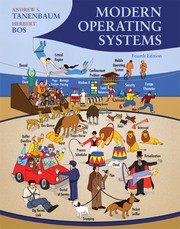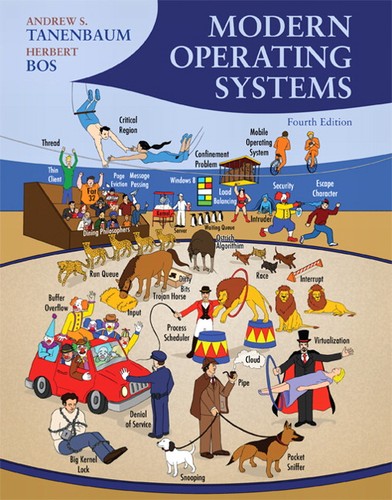Check nearby libraries
Buy this book

Modern Operating Systems, Fourth Edition, is intended for introductory courses in Operating Systems in Computer Science, Computer Engineering, and Electrical Engineering programs. It also serves as a useful reference for OS professionals
The widely anticipated revision of this worldwide best-seller incorporates the latest developments in operating systems (OS) technologies. The Fourth Edition includes up-to-date materials on relevant¿OS. Tanenbaum also provides information on current research based on his experience as an operating systems researcher.
Modern Operating Systems, Third Editionwas the recipient of the 2010 McGuffey Longevity Award. The McGuffey Longevity Award recognizes textbooks whose excellence has been demonstrated over time.http://taaonline.net/index.html
Teaching and Learning Experience
This program will provide a better teaching and learning experience–for you and your students. It will help:
-
Provide Practical Detail on the Big Picture Concepts: A clear and entertaining writing style outlines the concepts every OS designer needs to master.
-
Keep Your Course Current: This edition includes information on the latest OS technologies and developments
- Enhance Learning with Student and Instructor Resources: Students will gain hands-on experience using the simulation exercises and lab experiments.
Check nearby libraries
Buy this book

Previews available in: English Spanish
Subjects
Besturingssystemen, İşletim sistemleri (Bilgisayarlar), Operating systems (Computers), ÇIðsletim sistemleri (Bilgisayarlar, Computers and IT, Betriebssystem, Verteiltes Betriebssystem, Operating systems & graphical user interfaces (GUIs), Systèmes d'exploitation (ordinateurs), Sécurité, Système multiprocesseur, Système fichier, Gestion mémoire, Système interblocage, Ordonnancement système, Communication inter-processus, Processus, Structure système exploitation, Conception système exploitation, Structure ordinateur, Système d'exploitation, Operating systems, Système d'exploitation réparti, Manuel, Logiciels, Qa76.76.o63 t359 2001, 005.4/3, Qa76.77 .t359 2015, 005.43Showing 7 featured editions. View all 31 editions?
| Edition | Availability |
|---|---|
| 1 |
aaaa
|
|
2
Modern Operating Systems: Pearson New International Edition
2013, Pearson Education, Limited
in English
1292025778 9781292025773
|
eeee
|
| 3 |
bbbb
|
| 4 |
zzzz
|
| 5 |
eeee
|
|
6
Modern Operating Systems: Second Edition
2001, Prentice Hall
in English
- 2nd ed.
0130313580 9780130313584
|
eeee
|
| 7 |
eeee
|
Book Details
Table of Contents
Classifications
Edition Identifiers
Work Identifiers
Community Reviews (0)
History
- Created September 15, 2014
- 17 revisions
Wikipedia citation
×CloseCopy and paste this code into your Wikipedia page. Need help?
| September 13, 2025 | Edited by Drini | Edited without comment. |
| September 13, 2025 | Edited by Drini | Add TOC from Tocky |
| December 19, 2023 | Edited by ImportBot | import existing book |
| December 5, 2022 | Edited by ImportBot | import existing book |
| September 15, 2014 | Created by Marco Galdos | Added new book. |















